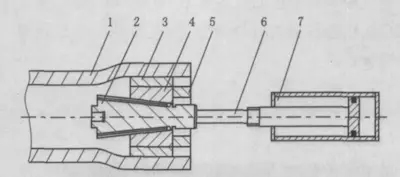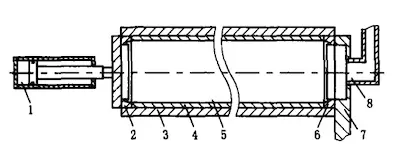Introduction
- Correcting the uneven deformation of the steel pipe during the forming and welding process so that the diameter, roundness, and straightness of the steel pipe can reach the required accuracy.
- Eliminating the residual stress of the pipe body caused by the compression process of the forming machine, improving the stress distribution, and enhancing the overall mechanical properties of the steel pipe.
- Eliminating the residual stress in the weld caused by welding, and avoiding hydrogen embrittlement and hydrogen-induced cracks.
There are five types of steel pipe expansion machines, including hydraulic expansion machines, pneumatic expansion machines, mechanical expansion machines, electromagnetic expansion machines, and roller expansion machines. Hydraulic expansion machines are highly efficient and precise. Pneumatic expansion machines use compressed air for pipe expansion. Mechanical expansion machines use physical force applied through mechanical means, such as rollers or mandrels, to expand welded pipes. Electromagnetic expansion machines utilize electromagnetic forces for expansion and are sometimes used for specialized applications or high-precision work. Roller expansion machines use a set of rollers to expand pipes, ideal for pipes that require uniform expansion or continuous processes. These steel pipe expansion machines are crucial in the production chain of welded steel pipes. They accurately modify pipe dimensions, ensuring compliance with industry standards and contributing to overall operational efficiency within manufacturing facilities.
1. Definition and Working Principle of the Two Expansion Processes
1.1 Definition of the Two Expansion Processes
The hydraulic expansion process uses high-pressure emulsion as the pressure transmission medium, with an external mold to limit the size after expansion, expanding the steel pipe from the inside in a single operation. This is an integral die flexible expansion process. Both processes are generally categorized as mechanical expansion methods.
1.2 Expansion Principle
1.2.1 Mechanical Expansion Principle

1. steel pipe 2. expansion head 3. expansion mold 4. inclined block 5. fixed retaining ring 6. connection (expansion taper head and oil cylinder) mechanism 7. oil cylinder
Figure 1 Schematic diagram of mechanical expansion
1.2.2 Principle of Hydraulic Expansion

1. Thrust cylinder 2 2. Tube end seal 3. External mold 4. Steel pipe 5. High-pressure emulsion 7. Tube end baffle 8. High-pressure water injection pipe
Figure 2 Schematic diagram of hydraulic expansion